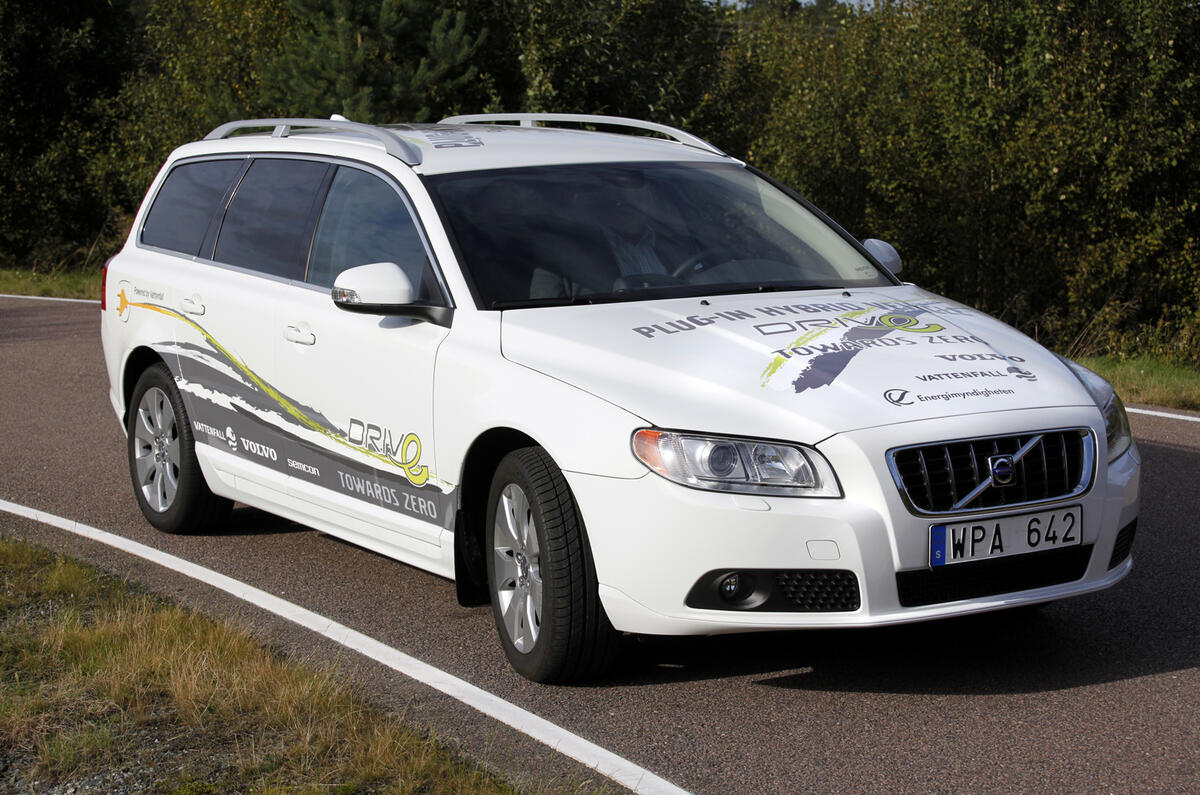What is it?
Although it has been experimenting with hybrids for years, Volvo will be late to the party when it appears with a production version of this plug-in V70 in 2012.
So rather than offer a petrol or diesel hybrid, it will be offering us the next stage, which is a plug-in diesel. And it will be configured to allow up to 31 miles of electric-only propulsion, and with enough zest that you won’t be creating a cursing queue behind you.
Better still, the 205bhp 2.4 litre diesel engine will allow an overall range of 745 miles. Not that the two operate with entire independence. This is a series hybrid, and the diesel assists when heavy acceleration is demanded of the electric motor, and the electric motor can provide the diesel engine with a boost when the V70 is overtaking at the higher speeds that demand diesel power, or when the diesel is operating less efficiently in the 25-50mph range.
Volvo engineers even talk of programming the two engine’s deployment so that pure electric propulsion is reserved for the city driving at the end of a journey for instance, where zero tailpipe emissions might be required.
This prototype is the result of a joint project with Swedish electricity supplier Vattenfall, which will be able supply V70 owners with green electricity to make it truly zero-emission when running in electric mode.
And when the diesel motor is operating, it achieves carbon dioxide emissions of under 50g/km – impressive, for a large estate car.
What’s it like?
We only got a partial impression of how this car will function because the V70 was locked in electric-only mode, which meant, oddly, that we were driving a rear-wheel drive Volvo V70, and with a 100bhp electric motor rather than the production version’s 70bhp to compensate for the prototype’s extra weight.
So there was no sampling the impressive performance the finished 275bhp item will be capable of mustering despite a projected all-up weight bordering on two tonnes.
But the point was to demonstrate how usable this Volvo is in electric-only mode. And you can forget the kind of creeping about you must pursue if you attempt to avoid triggering the petrol engine in a Toyota Prius – the electric motor will drag it to speeds of over 60mph, and with enough urge to be usable in city commuting, which is the point.
Its step-off from rest is smart enough, as its progress to 30mph or so, but beyond that it gathers pace with less urgency. But this is of little relevance, because as a fully functioning hybrid the diesel engine would kick in if strong acceleration is required, as it does on a Prius. The sprint to 62mph takes 15sec in electric mode and 8.9sec in hybrid, with a top speed of 75mph.
Where it differs from the Toyota is in its plug-in capability of course, the intention being that you recharge it at home or work in order to minimise use of the diesel engine, which acts as a battery charger as well as a means of propulsion.
But it is far less efficient at recharging the V70’s 150kg battery pack than the electricity drawn from a socket.
The test car generated a fair bit of whine, but this is unrepresentative, the motor doing without a sound-proofing shroud, and being mounted north-south rather than in the transverse orientation of the finished article. And as with a Prius, it’s simple car to drive despite its complexity.

















Join the debate
Add your comment
Re: Volvo V70 Plug-In Hybrid
I like the sound of this - if I drive less 30 miles each week generally at less than 30 mph, then does that mean the motor would never cut in?
Re: Volvo V70 Plug-In Hybrid
745 mile range? I can get that in my D5 without any fancy (heavy) electrickery, surely that means the motor is just there to compensate for itself? A bit like KERS in F1!